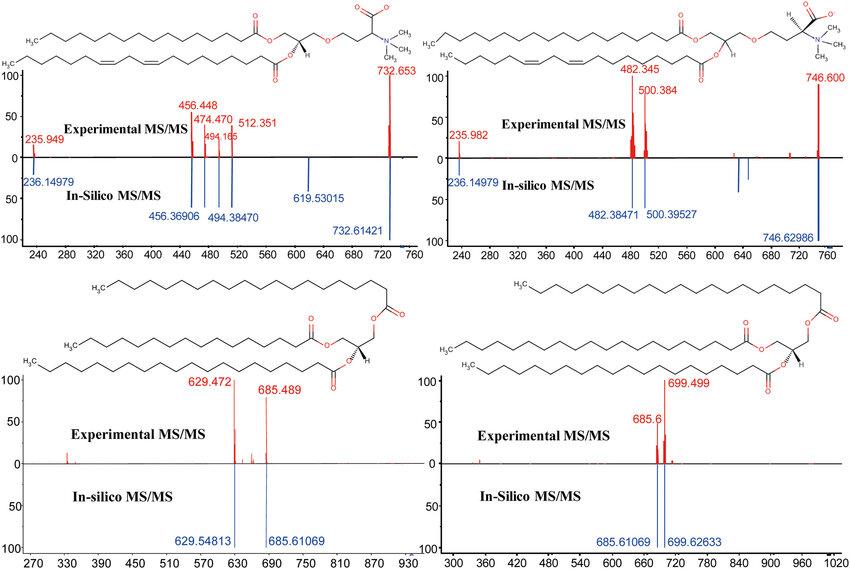Algae Lipidomics Analysis Service
Algae, a diverse group of photosynthetic organisms, play a crucial role in various ecosystems. They encompass a wide range of organisms, including microalgae and macroalgae, each with its unique characteristics and applications. Algae are found in various aquatic environments, from freshwater to marine habitats, and can even thrive in extreme conditions like hot springs or icy regions.
Partnering with Creative Proteomics ensures access to a comprehensive suite of algae lipidomics analysis services, performed by highly skilled scientists using advanced instrumentation and robust protocols. Our tailored solutions and scientific expertise enable you to gain valuable insights into algal lipid composition, facilitating your research and development goals.
Algae Lipidomics Analysis in Creative Proteomics
Algae lipidomics analysis involves the comprehensive characterization of algal lipids, including but not limited to:
Fatty Acid Profiling: Determination of the fatty acid composition, including saturated, monounsaturated, and polyunsaturated fatty acids, provides insights into the nutritional quality and functional properties of algal lipids.
Polar Lipid Analysis: Identification and quantification of polar lipids, such as glycolipids, phospholipids, and sulfolipids, contribute to understanding the membrane structure and signaling functions within algal cells.
Neutral Lipid Analysis: Profiling and quantification of neutral lipids, primarily triglycerides (TAGs), helps evaluate the lipid storage capacity and potential for biofuel production in algae.
Secondary Metabolite Analysis: Identification and characterization of bioactive compounds, such as carotenoids, tocopherols, and phytosterols, offer insights into the pharmaceutical and nutraceutical potential of algal lipids.
Algae Analysis Platforms and Instrumentation
Gas Chromatography-Mass Spectrometry (GC-MS):
Instrumental Models: Agilent 7890A GC coupled with Agilent 5977A MSD, Thermo Scientific ISQ Series GC-MS, Shimadzu GCMS-QP2020 NX.
Applications: GC-MS allows for the separation and identification of volatile and semi-volatile compounds in algal lipids. It is well-suited for fatty acid profiling and the analysis of volatile lipid components.
Liquid Chromatography-Mass Spectrometry (LC-MS):
Instrumental Models: Thermo Scientific Q Exactive series (e.g., Q Exactive Plus, Q Exactive HF), Waters Xevo G2-XS QTof, Agilent 6550 iFunnel Q-TOF LC/MS.
Applications: LC-MS is a versatile technique for the analysis of non-volatile lipids, including polar lipids, pigments, and other secondary metabolites. It offers high sensitivity, selectivity, and accurate mass measurement for comprehensive lipid profiling and compound identification.
 Annotation of complex lipids in algae by matching nanoelectrospray-linear ion trap MS/MS low resolution fragment spectra against the UC Davis LipidBlast library (Yang et al., 2015).
Annotation of complex lipids in algae by matching nanoelectrospray-linear ion trap MS/MS low resolution fragment spectra against the UC Davis LipidBlast library (Yang et al., 2015).
Sample Requirements for Algal Lipidome Analysis
We accept a wide range of algal sample types, including but not limited to:
Microalgae: Samples derived from microalgae, such as Chlorella, Spirulina, and Dunaliella.
Macroalgae: Samples obtained from macroalgae, including seaweeds and kelps.
Applications of Algae Lipidomics Analysis
1. Nutritional Value and Functional Properties: Algal lipids contain a rich diversity of fatty acids, including essential omega-3 and omega-6 fatty acids. Understanding the lipid composition of algae helps evaluate their nutritional value and potential health benefits. It also aids in identifying specific lipids with functional properties, such as antioxidant or anti-inflammatory properties, which can be utilized in the development of functional foods and dietary supplements.
2. Biofuel Production and Carbon Sequestration: Certain species of algae have the ability to accumulate high amounts of lipids, particularly triacylglycerols (TAGs). These lipids can be converted into biodiesel, providing a promising renewable energy source. Analyzing algal lipids aids in identifying lipid-rich strains and optimizing cultivation conditions to enhance lipid productivity, contributing to the development of sustainable biofuel production. Additionally, algae's capacity for carbon dioxide fixation during lipid synthesis makes them a potential tool for carbon sequestration and mitigating greenhouse gas emissions.
3. Pharmaceutical and Biotechnological Applications: Algal lipids harbor bioactive compounds with pharmaceutical and biotechnological potential. Analyzing these lipids enables the identification and quantification of specific bioactive molecules, such as carotenoids, phytosterols, and polyunsaturated fatty acids. This information facilitates the discovery of novel drugs, nutraceuticals, and the development of biotechnological applications, including the production of high-value compounds like omega-3 fatty acids or astaxanthin.
4. Biological and Ecological Studies: Lipidomics analysis provides insights into the lipid profiles of different algal species and their response to environmental factors. It aids in understanding the ecological roles of algae and their adaptations to changing environmental conditions. Additionally, lipidomics can contribute to the study of algal physiology, growth dynamics, and interactions within aquatic ecosystems.
5. Strain Selection and Genetic Engineering: Lipidomics analysis plays a crucial role in selecting and optimizing algal strains with desirable lipid profiles for specific applications. By identifying lipid-rich strains or modifying lipid metabolism through genetic engineering, lipid productivity and quality can be improved for various purposes, including biofuel production, high-value compound synthesis, or wastewater treatment.
6. Aquaculture and Aquatic Feed Development: Understanding algal lipid composition is essential for formulating nutritionally balanced diets for aquaculture species. Lipidomics analysis aids in evaluating the lipid content and composition of microalgae used as feedstock in aquaculture. This knowledge allows for the optimization of feed formulations, improving the growth, health, and nutritional quality of farmed fish, shellfish, and other aquatic organisms.
7. Environmental Monitoring and Bioremediation: Algae are important bioindicators of water quality and ecosystem health. By analyzing algal lipids, researchers can assess the impact of environmental stressors, such as pollution or climate change, on lipid metabolism and membrane integrity. Lipidomics analysis also contributes to the development of algal-based bioremediation strategies, utilizing algae's ability to remove or degrade pollutants from aquatic environments.
Reference
- Yang, Dawei, et al. "Lipidomic analysis of Chlamydomonas reinhardtii under nitrogen and sulfur deprivation." PloS one 10.9 (2015): e0137948.
* Our services can only be used for research purposes and Not for clinical use.
Services:


 Annotation of complex lipids in algae by matching nanoelectrospray-linear ion trap MS/MS low resolution fragment spectra against the UC Davis LipidBlast library (Yang et al., 2015).
Annotation of complex lipids in algae by matching nanoelectrospray-linear ion trap MS/MS low resolution fragment spectra against the UC Davis LipidBlast library (Yang et al., 2015).
